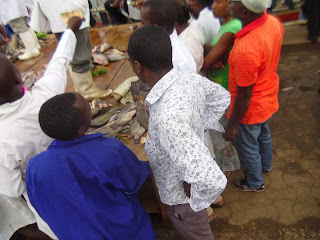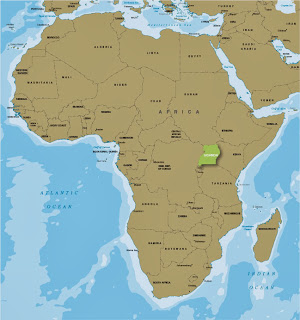Today I gave my students their final exam. I know I’ve mentioned before how much I’ve
enjoyed teaching my Intro to Tourism class.
But there are a few distinct differences about my students here at the
University of Botswana compared to my students back in Texas which are a little
challenging to get used to.
I will start off with what I like better here. Here in Botswana there is no attempt to
negotiate grades. American students,
regardless of the university in which they are enrolled, are often unwilling to
accept the grades they earn. Every semester without fail I have easily
half a dozen students or more argue, beg and/or complain about their
grades. I stand my ground every time,
but that doesn’t halt the process. I am
very explicit in my syllabus, I make announcements and I reiterate time and
again that students earn their
grades, I do NOT accept late work, and no I will NOT round up so you can get
the next higher letter grade. Inevitably
I have a senior who is supposed to graduate come to me and tell me that if he
fails my class he won’t graduate. “You
chose this fate when you missed 8 classes, knowing that attendance counts
towards your final grade; when you missed your group presentation and
plagiarized half of your semester report.”
Here in Botswana students do not question the grades
they are assigned. Three of my students
failed to come to class the day they had a group presentation. They asked if they could have partial credit
since they contributed information. I
told them “No. You were told at the
start of the semester if you do not participate in the group presentation you
will receive a zero.” I reported these conversations to my department chair
expecting she would receive a visit from the students; she never heard from any
of them.
So, I wish my American students would take note of
what my Batswana students already know: Earn your grade. Don’t come to me in the 11th hour
asking for me to make an exception to the rule and do you a favor. It’s not going to happen.
However, my Batswana students are not angels. The thing I do NOT like about the Batswana
students is there is a widely accepted tendency towards cheating. Yes, American students cheat, but I don’t
think it is as prevalent as it is here.
And I know in my classes back in Texas cheating during an exam in my
class is a highly dangerous sport as suffering my wrath is way worse than
failing a class due to cheating. I think
my Texas students would rather explain to their parents they were foolish
enough not to study and therefore earned a poor grade than risk cheating and
having to deal with the ‘Phelan Eyes of Shame.’
But here in Botswana cheating is rampant. And everyone knows about it. The faculty try to discourage it as much as
possible, but the students are so accustomed to it they don’t understand how to
deal with it. During an exam I gave
earlier in the semester I threw three students out of my classroom and
automatically gave them zeros for cheating off a classmate’s test.
But to go back to my previous point, Batswana
students don’t question authority. When
I threw the students out for cheating they didn’t attempt to defend themselves,
explain their actions or beg for forgiveness.
They accepted their fate without argument. Of course, they also knew that they earned
their punishment, just like they understand they earn their grades, whether
they are good or bad.
Here are my students working hard this morning
during their final:
Now all I have to do is grade 126 exams and in six
week the cycle starts all over again. I
can’t wait.






































